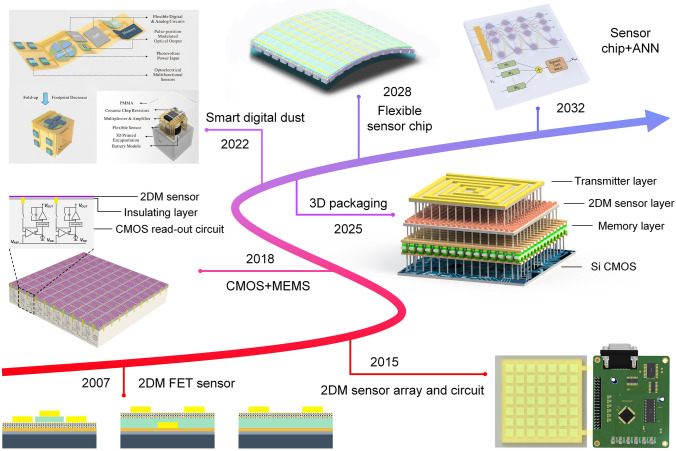Fig. 14.
Developments of 2D material sensors toward chip. After the discovery of graphene, individual 2D material sensors with different gate structure were also demonstrated in 2007. The advent of 2D materials sensor arrays in conjunction with an external processing circuit in 2014 has increased the scale and utility 2D materials of sensors. In 2018, the combination of CMOS and MEMS processes has led to a reduction in the area of 2D materials sensor chips. In 2022, Mei et al. proposed the concept of digital micro-dust to achieve a high-density integrated, low-cost distributed 2D materials sensor chip. Reproduced with permission [222]. Copyright (2022), Elsevier. In 2025, the emerging 3D packaging technology will overturn the distribution structure of sensing networks and open a new era of ultracompact intelligent sensing systems. In 2028, 2D materials sensor chips will evolve toward full flexibility for enhanced sensing capabilities and close cooperation between humans and machines. In 2032, budding sensor technologies integrate sensor networks and advanced algorithms on a chip to reduce the significant power consumption required for transmission and computation

